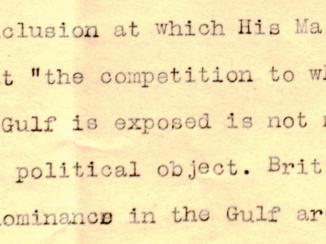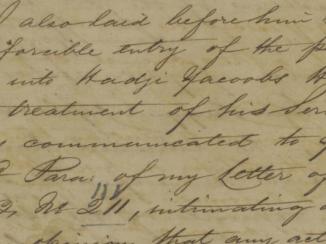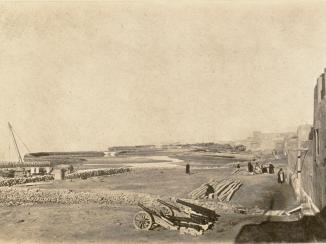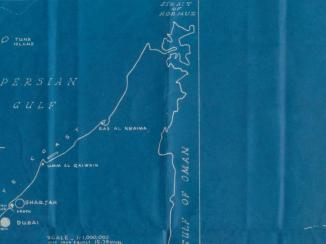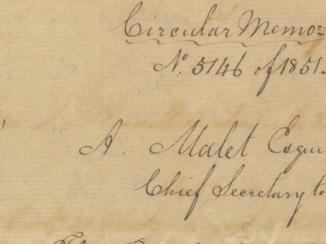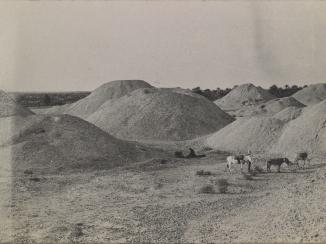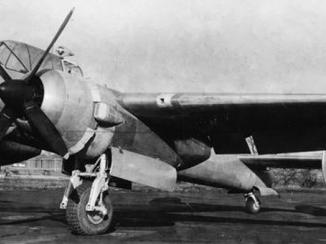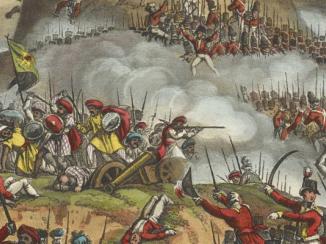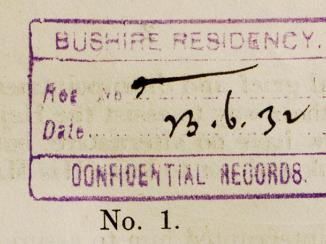Overview
In 2013, sixty-four million international air passengers passed through Dubai International Airport, making it second only to London’s Heathrow Airport in terms of its volume of international air travel. One of the reasons why such a large amount of air traffic passes through the Gulf today – around 100 million through Dubai, Abu Dhabi and Doha international airports combined in 2012 – lies in their region’s strategic geographic position between Europe and the Asian subcontinent and Australia.
Early Development in the 1930s
British Government officials recognised the importance of the Gulf as a strategic air route in the 1930s, as they sought to establish a chain of aerodromes along the Gulf’s Arab coast. This was part of the ambitious Empire Air Mail Scheme, which sought to consolidate Britain’s air routes to her most prized imperial possession, India, and beyond to Australia. The first of these aerodromes was constructed at Sharjah, where the Al Mahatta museum now stands.
Throughout the 1930s, facilities including landing strips, refuelling stations, wireless stations, beacons and accommodation, were set-up along the Gulf coast at Kuwait, Bahrain, Qatar, Abu Dhabi, Dubai, Sharjah, Ra’s al-Khaymah, and Kalba. This was a period in time when seaplanes were as prevalent as aeroplanes, and when aircraft had to make frequent stops to take on fuel or seek shelter from poor weather.
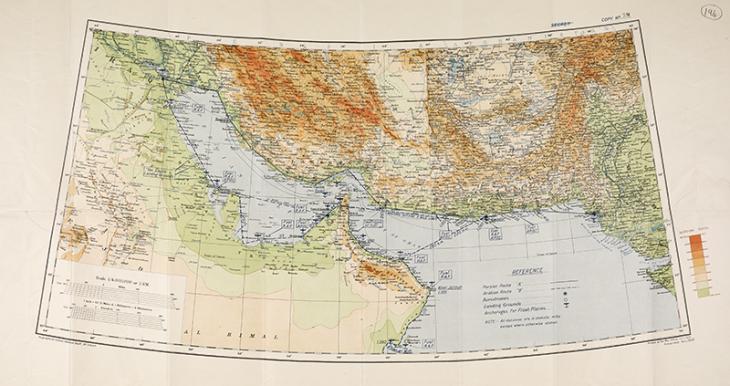
Negotiations with Local Shaikhs
Permission to construct these air facilities had to be negotiated with the shaikhs on whose land they were to be established. For the most part, these negotiations were protracted and delicate, primarily because the proposals were regarded by the shaikhs and their subjects as further intrusion by the British into their territories and way of life.
Negotiations could be further hindered by the sometimes unhelpful practice of British officials surveying sites and sometimes even constructing facilities, while negotiations were still ongoing. If negotiations threatened to stall, British officials could adopt a hard line, threatening the shaikhs with sanctions should they raise any objections to the agreements being thrashed out.

Inauspicious Beginnings
The various agreements signed between British officials and the Arab shaikhs were characterised by similar terms. The British Government promised to pay monthly or annual rents for the facilities they wanted. In return, the Arab rulers were obliged to make arrangements for the protection of sites, particularly those where aviation fuel was stored, although the cost of hiring guards was borne by the British Government. Additionally, British officials promised that their aviation crews would not interfere with the local population or enter the local towns.

Unsurprisingly, descriptions of these original air facilities bear little resemblance to the Gulf’s airports of today. For example, Dubai’s aviation history started out in 1936 with a dhow A term adopted by British officials to refer to local sailing vessels in the western Indian Ocean. moored in Dubai creek, on which was stored six-hundred tins of petrol and forty drums of mineral oil, used for refuelling seaplanes. The earliest landing strips were little more than areas of flat ground marked out by crude oil.
Britain continued to play a key role in developing the Gulf’s aviation industry – in both a military and civilian sense – throughout the 1930s and 1940s. The Second World War quickened the pace of aviation development, particularly at the key strategic sites of Muharraq in Bahrain and Sharjah. From 1948, the Gulf’s first domestic flights, operated by Gulf Aviation Limited, flew between Bahrain, Doha, Sharjah, and Dhahran in Saudi Arabia.








